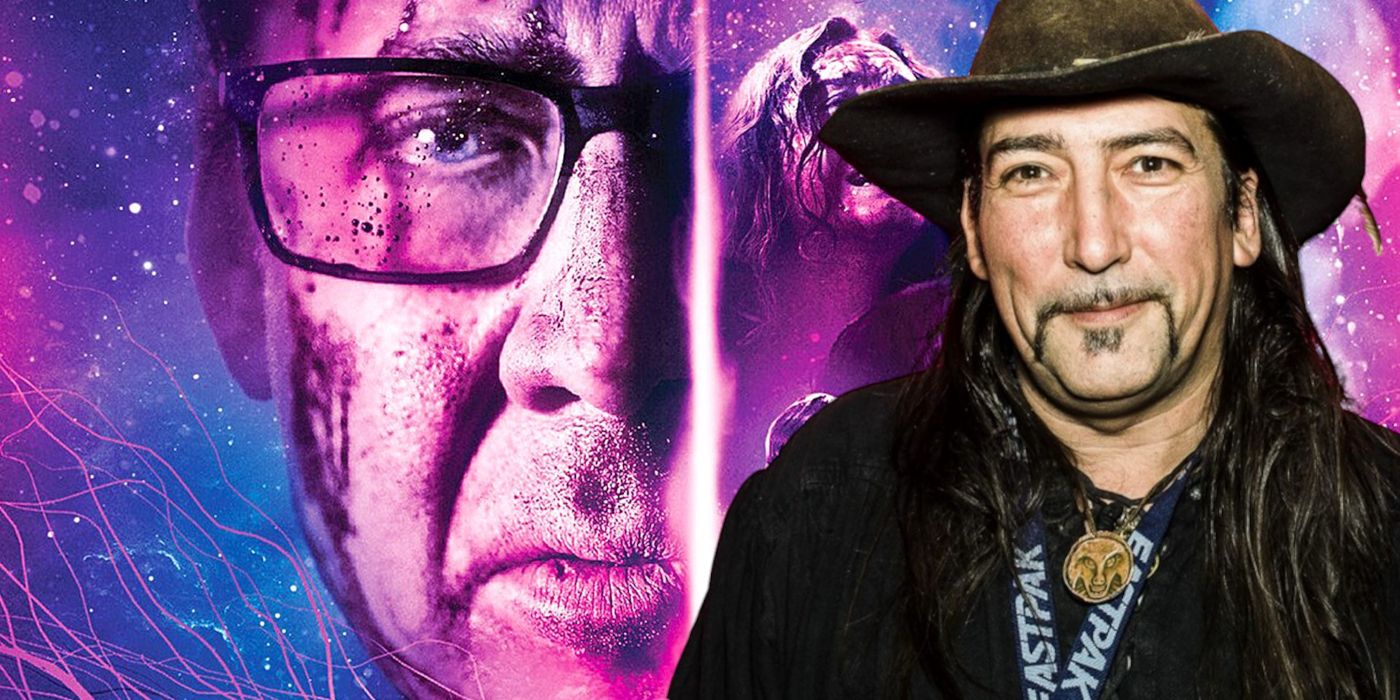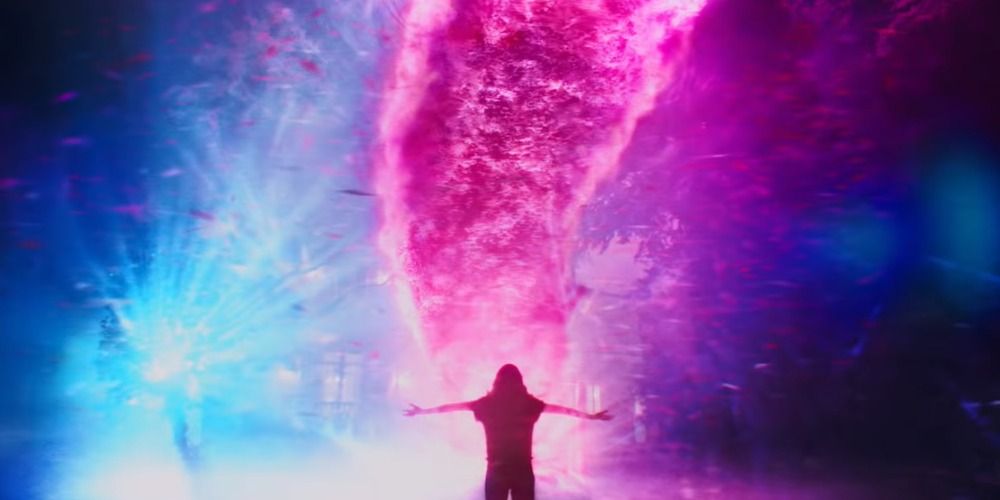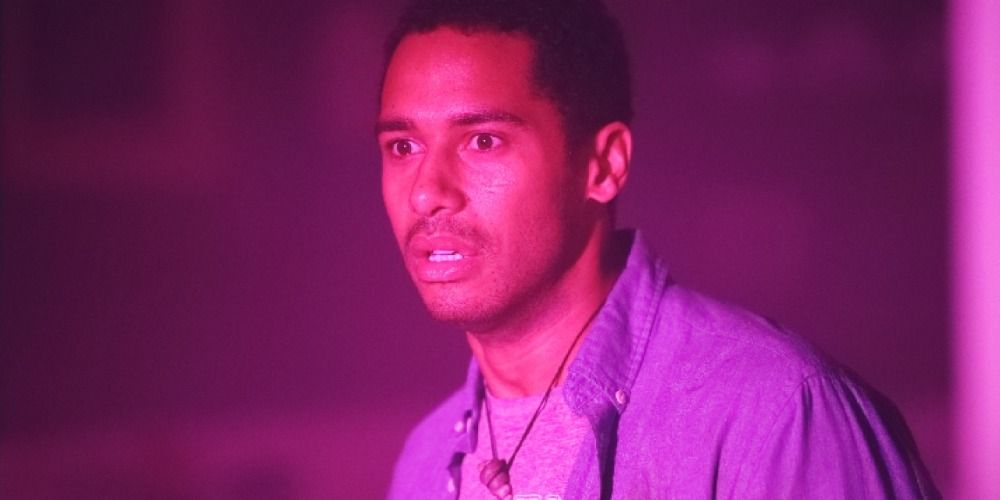Richard Stanley signaled a strong return to his enterprising blend of horror and sci-fi feature films with 2019's Color Out of Space. Adapted from H.P. Lovecraft's 1927 short story "The Colour Out of Space," Stanley's first film in almost 25 years is a phantasmagorical nightmare that updates its source material without compromising the cosmic horror themes that make it so terrifying. Color Out of Space is the first installment in a cinematic trilogy planned by Stanley and production company SpectreVision that pays tribute to Lovecraft's literary legacy. What's next on their agenda? A reimagining of another popular Lovecraftian work: 1929's "The Dunwich Horror."
Color Out of Space impressed fans and critics alike, who praised its stunning visuals and special effects. Like the story, Color Out of Space's events transpire on the outskirts of Arkham, Massachusetts, a fictional town central to Lovecraft's universe. Nicolas Cage plays Nathan Gardner, who lives on a rural estate with his wife, daughter, and two sons. When a luminous meteorite crashes on the Gardners' property one night, it unleashes a smelly, alien mist that mutates everything and everyone in its proximity. Radiant, rich, and hallucinatory lights emanate from the family's well as the mist (referred to as the titular Color) goes to work, transmitting carcinogenic waves of alien energy that eventually destroy the Gardners both psychologically and physically.
"The Dunwich Horror" is also set in Massachusetts, but this time in the small town of Dunwich. Told from the perspective of an unnamed narrator writing about events in the past tense, the story introduces one of the most iconic backwoods families in horror: the Whateleys. The narrative focuses on Wilbur Whateley, a precocious boy whose rapid development and witchcraft-loving grandfather lead locals to believe he's the spawn of some inhuman entity. The adult Wilbur, who towers over everyone and sends all dogs into a frenzy, becomes obsessed with tracking down a copy of the Necronomicon, an ancient book whose spells he needs in order to fulfill some macabre assignment. The tale reaches its climax as an invisible, monstrous beast holed up in the Whateley home escapes and wreaks havoc on Dunwich.
The particulars of when Stanley's The Dunwich Horror will be filmed or released remain uncertain, but the director has already shared some promising information about his script. The second installment in the trilogy will occur after the events of Color Out of Space, in a near-future Arkham. The director also intends to include vital plot points from "The Dunwich Horror" in his movie. In the story, Wilbur Whateley travels to Arkham, where he gains access to the local Miskatonic University's copy of the Necronomicon. Arkham, Miskatonic, and the Necronomicon will feature prominently in Stanley's adaptation. Stanley told Rue Morgue his goal with The Dunwich Horror, just as it was with Color Out of Space, is "to try to do the original story justice, and at the same time continue to open up the universe."
Stanley also shared a major spoiler with Rue Morgue: "It’s my intention to have Ward Phillips from Miskatonic University be the sole continuing character through the next two installments." Ward, played by Elliot Knight in Color Out of Space, is a hydrologist surveying the water supply around the Gardner property who watches the celestial Color annihilate the natural landscapes around it. Ward is the only character who presumably survives the ordeal. He also dons a Miskatonic University shirt in the film, connecting him with the institution central to "The Dunwich Horror." Stanley's choice to cast a black British actor as a major player in all three movies undercuts Lovecraft's well-documented racist and xenophobic views, most recently explored in HBO's Lovecraft Country.
Stanley's narrative choices so far emphasize many of Lovecraft's major mythos, including alien creatures and the pantheon of cosmic deities that appear in his stories - from Great Old Ones like Cthulhu to Outer Ones like Azathoth. In "The Dunwich Horror," the reader learns it's the intergalactic entity Yog-Sothoth who impregnated Wilbur's mother Lavinia. Lavinia gave birth to twins: Wilbur and his unnamed brother - the barn-sized ogre rampaging through Arkham. Just how much of this Stanley plans to include in his film remains to be seen. He is also mum about which Lovecraft story will be adapted after The Dunwich Horror, but he did tell The Hollywood Reporter this: "I think these movies will climax with a battle between humanity and the Old Ones."
The future implications of one detail in Color Out of Space remain to be seen. The Gardner's Wiccan teenage daughter shares the same name as Wilbur Whateley's deformed, albino mother in "The Dunwich Horror." Lavinia, played by Madeleine Arthur, disintegrates in a powerful beam of light from the Color at the end of the movie, but does this mean she is actually dead? Even though Stanley asserted that Ward will be the only character returning for the second and third films, the choice to name Arthur's character Lavinia could still play into The Dunwich Horror somehow. Whatever the case may be, the minutiae found in Stanley's new, evolving Lovecraftian universe showcases the director's expansive knowledge of Lovecraft's work.



